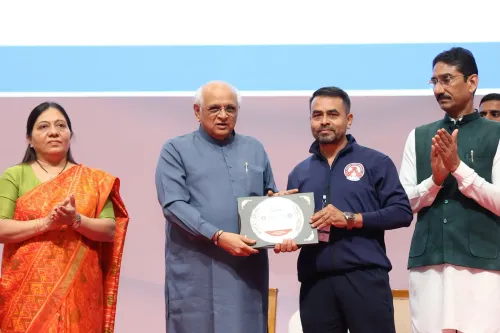Is the Supreme Court Enhancing Efficiency with AI and ML?

Synopsis
Key Takeaways
- AI and ML integration is enhancing efficiency in the Supreme Court.
- Judgments are now accessible in 18 Indian languages.
- Collaboration with IIT Madras for tool development.
- SUPACE aims to improve case understanding and precedent search.
- Over 86,000 cases are currently pending in the Supreme Court.
New Delhi, July 25 (NationPress) The Supreme Court is now utilizing Artificial Intelligence (AI) and Machine Learning (ML) technologies to enhance efficiency in case management and transcribe oral arguments during Constitutional Bench proceedings, as stated in a Lok Sabha update on Friday.
Minister of State (Independent Charge) for Law and Justice, Arjun Ram Meghwal, informed that the Supreme Court is closely collaborating with the National Informatics Centre (NIC) to implement AI and ML tools for translating judgments into 18 Indian languages.
These languages encompass Assamese, Bengali, Garo, Gujarati, Hindi, Kannada, Kashmiri, Khasi, Konkani, Malayali, Marathi, Nepali, Odia, Punjabi, Santali, Tamil, Telugu, and Urdu. The judgments are accessible via the Supreme Court's eSCR portal.
According to the Minister, the Supreme Court has partnered with IIT Madras to create and implement AI and ML tools integrated with electronic filing software for identifying defects in documents.
Recently, a prototype of this system has been made available to 200 Advocates-on-Record, he noted.
The Supreme Court is also evaluating AI and ML prototypes aimed at defect remediation, as well as data and metadata extraction in collaboration with IIT Madras.
He emphasized, "This AI and ML-based tool will be integrated with the electronic filing module and the case management software called Integrated Case Management & Information System (ICMIS)."
The AI-based tool, named Supreme Court Portal Assistance in Court Efficiency (SUPACE), is designed to create a module that comprehends the factual context of cases with intelligent searches of precedents, in addition to case identification, and is currently in its development phase.
SUPACE may be launched after acquiring and deploying graphic processing units and other advanced technology, such as Tensor Processing Units, the Minister added.
In a related inquiry about ongoing court cases, MoS Meghwal reported that, according to data from the National Judicial Data Grid (NJDG), as of July 21, there are at least 86,742 cases pending in the Supreme Court, 6.33 million in High Courts, and 46.5 million in district and subordinate courts.










